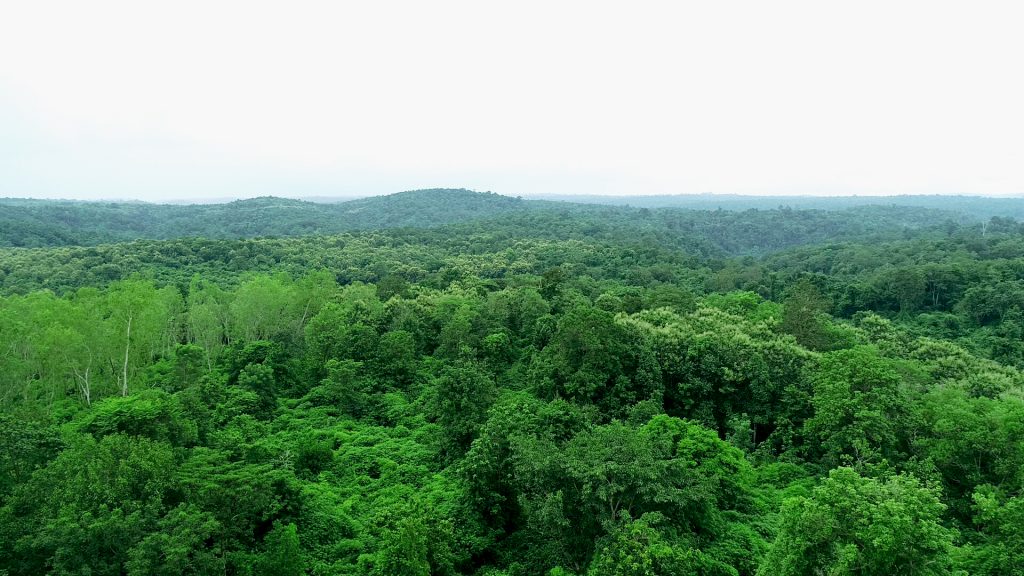Forest Carbon Partnership Facility (FCPF)
Forest Carbon Partnership Fund The FCPF, hereinafter referred to as the FCPF, commenced in June 2008, is a global partnership that helps developing countries prepare for the implementation of the RED Plus Framework. REDD+: Reducing Emission from deforestation and forest degradation and the role of conservation, sustainable management of forests and enhancement of forest carbon stocks in developing countries) forest degradation and increase the role of forest conservation Sustainable Forest Management and increasing forest carbon stocks in developing countries. The FCPF will finance developing countries in the tropics or subtropics. To develop the potential of people, organizations, institutions, policies, laws, plans, measures and strategies for the implementation of the RED Plus framework. To prepare for entering the pay-on-performance phase The important measures that must be prepared are Redd Plus Strategy or Country Redd Plus Action Plan Forest Sector Reference Level/Forest Sector Reference Level Forest resource change monitoring system/measurement, reporting and verification system and social impact protection system information system natural resources and environment
Fund structure and management
The World Bank is the custodian and manager of the Fund. In terms of the Readiness Fund, the Fund Committee (Participant Committee: PC) is a committee to consider providing support to developing countries that have proposed projects for such grants. The fund committee consists of 14 members from developing countries who are members of the fund and 14 from developed countries who provide financial support to the fund, totaling 28 members. There were six observers representing the indigenous community. forest dependent communities, NGOs, civil society organizations and the World Bank.
fund committee There will be meetings twice a year (approximately March and September/October of each year) and one meeting of member countries after the Fund Committee meeting in September or October.
member
The FCPF has 47 member countries: 18 countries from Africa, 18 countries from Latin America and the Caribbean, 11 countries from Asia and the Pacific (Argentina, Beli S Bolivia Bhutan Burkina Faso Cambodia Cameroon Central African Republic Chile Colombia Democratic Republic of the Congo Republic of the Congo Costa Rica Cote d Ivoire Dominican Republic El Salvador Ethiopia Fiji Gabon Ghana Guyana Indonesia Kenya Laos Liberia Guatemala Honduras Madagascar Mexico Mozambique Nepal Nicaragua Nigeria Pakistan Panama Papua New Guinea Paraguay Peru Sudan Suriname Tanzania Thailand Togo, Uganda, Uruguay, Vanatu, Vietnam)
Funding source of FCPF
Initial funding for the FCPF came from 16 different sources: Agency Francaise de Development (AFD), Australia, British Petroleum, Canada, CDC Climate, Denmark, the European Union, Finland, Germany, Italy, Japan, The Nature Conservancy, the Netherlands. , Norway, Spain, Switzerland, the United Kingdom and the United States contributed $345 million to the Fund. Capital for preparation (Readiness Fund) in the amount of 200 million US dollars. and carbon fund (Carbon Fund) amounting to 145 million US dollars.
Guidelines for obtaining budget support from the Fund
Applications for funding from developing countries that are members of the Forest Carbon Partnership Fund in the readiness phase must be completed through the following steps:
Developing countries that are members must develop a conceptual framework for action known as the R-PIN (Readiness Plan Idea Note), proposed by the World Bank.
The World Bank presents the R-PIN to the Fund Committee (PC), if it agrees, it will pass a resolution of USD 200,000 through the World Bank. In order for developing countries to make proposals for the Readiness Preparation Proposal (R-PP)
The World Bank will provide guidelines and forms for the preparation of proposals for the RED Plus Preparatory Program (R-PP) to be used by developing countries receiving such funding as a guideline for documentation. such and when it is completed, submit proposals for the readiness for the RED Plus Mechanism to the World Bank for submission to the Fund Committee for consideration.
Before the fund committee The proposal will be reviewed by the World Bank on the Readiness Plus Mechanism (R-PP). People's Representative to consider giving opinions If there are any additional comments, the host country of the project must be considered to be corrected or if not corrected, additional reasons must be explained and when it's done The World Bank will present it to the Fund Committee for consideration.
Budget support for the implementation of the 1st Redd Plus Preparatory Program (R-PP) proposal will be limited to a maximum amount of US$ 3.6 million. And if it has been implemented for a while or there is a disbursement and commitment of 50 percent of the budget that has been received. And the progress of the implementation has been reported. Developing countries can submit projects for additional funding, but not more than $5 million.
When the fund committee Agreed to support financial assistance The World Bank will appoint a World Bank Task Team Leader and a World Bank team to assess the risks of the project. and prepare documents for funding agreements with developing countries receiving funding. In the supporting documents, the implementation activities will be outlined in a budget of US$ 3.6 million based on national needs and the recommendation of experts from the World Bank.
Developing countries receiving scholarships must follow their individual country's procedures for signing such scholarship agreements.

